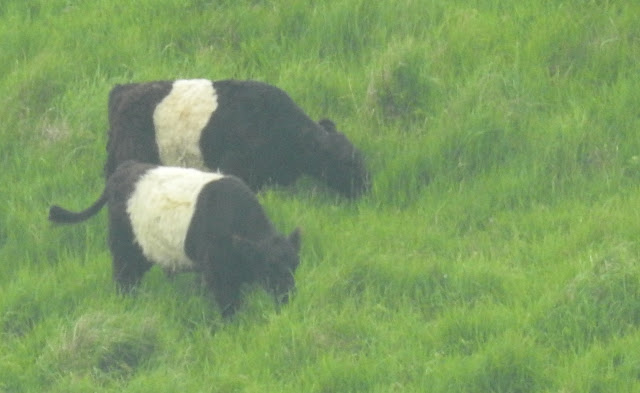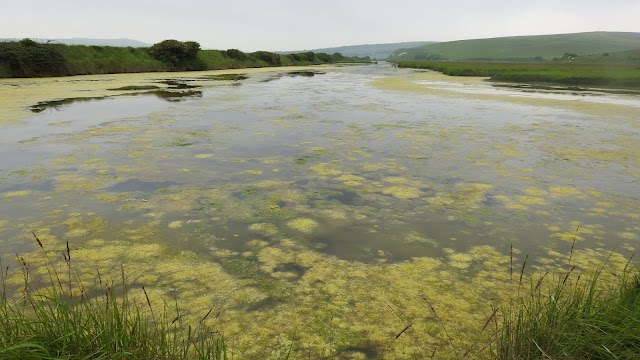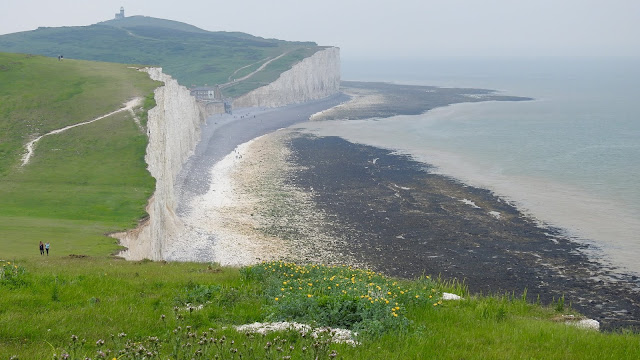Previous | Main | Next |
Places: South Downs National Park, Devil's Dyke, Brighton and Hove, Seaford Head Nature Reserve & Seven Sisters Cliffs, Birling Gap.
Wildlife & flora: Common pheasant, Western jackdaw, Wood pigeon, Isabelline wheatear, Belted galloway cattle, Canada goose, European rabbit, House sparrow, Ring-billed Gull, Adonis Blue Butterfly, Mistle thrush, Common blue butterflies, Thymus polytrichus ssp brittanicus Wild Thyme, Magpie, Tree Mallow, Sheep, Chicken, Domestic duck.
⏳ May 28-29, 2018
The South Downs National Park is England's newest national park, having become fully operational on 1 April 2011. The park, covering an area of 1,627 square kilometers (628 sq mi) in southern England, stretches for 140 kilometers (87 mi) from Winchester in the west to Eastbourne in the east through the counties of Hampshire, West Sussex, and East Sussex. The national park covers the chalk hills of the South Downs (which on the English Channel coast form the white cliffs of the Seven Sisters and Beachy Head) and a substantial part of a separate physiographic region, the western Weald, with its heavily wooded sandstone and clay hills and vales. The South Downs Way spans the entire length of the park and is the only National Trail that lies wholly within a national park.
Interactive map.
Brighton and Hove (/ˈbraɪtən ... ˈhoʊv/) is a city in East Sussex, in South East England. At the 2011 census, it was England's most populous seaside resort, with a population of 273,400.
Seaford Head is the best place to enjoy spectacular views of the Seven Sisters and Cuckmere Valley. A short walk from the car park at South Hill Barn takes you to one of the most spectacular views of the Seven Sisters, a wonderful undulating line of chalk cliffs. However the stunning views are not the only reason to visit this reserve.
Devil's Dyke, Sussex
Devil's Dyke is a 100m deep V-shaped valley on the South Downs Way in southern England, near Brighton and Hove. Devil's Dyke was a major local tourist attraction in the late 19th and early 20th centuries.
Common pheasant
Brighton and Hove, Seaford Head Nature Reserve & Seven Sisters Cliffs
Brighton and Hove (/ˈbraɪtən ... ˈhoʊv/) is a city in East Sussex, in South East England. At the 2011 census, it was England's most populous seaside resort, with a population of 273,400.
Seaford Head is the best place to enjoy spectacular views of the Seven Sisters and Cuckmere Valley. A short walk from the car park at South Hill Barn takes you to one of the most spectacular views of the Seven Sisters, a wonderful undulating line of chalk cliffs. However the stunning views are not the only reason to visit this reserve.
The Seven Sisters is a series of chalk cliffs by the English Channel. They form part of the South Downs in East Sussex, between the towns of Seaford and Eastbourne in southern England. They are within the South Downs National Park which is bounded by the coast, the Cuckmere and the A259 road. They are the remnants of dry valleys in the chalk South Downs, which are gradually being eroded by the sea.
Map
Wood pigeon
Belted galloway cattle
Canada goose
European rabbit
House sparrow
Ring-billed Gull
 |
| Adonis Blue Butterfly (Lysandra bellargus), female The populations in Britain are extremely localized. Find more here. |
Mistle thrush
 |
| Common blue butterflies (Polyommatus icarus) - mating |
 |
| Thymus polytrichus ssp brittanicus Wild Thyme |
Magpie and European rabbit
 |
| Tree Mallow Native shrubby plant, salt tolerant (expels salt through glands on its shiny leaves). Evidence suggests that puffins cannot breed successfully and abandon their burrows on islands invaded by tree mallow - read more here. |
Sheep
Domestic duck
Chicken





































































































































